TO
| Creator | Title | Description | Subject | Date | ||
|---|---|---|---|---|---|---|
| 1 |
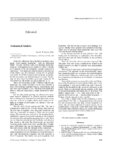 | Kestle, John R. W. | Abdominal binders | Sklar and colleagues2 describe their experience managing "over-shunting headaches" with an abdominal binder. Seventy children with over-shunting headaches complied with application of a binder for about 1 month. In 61 patients (87%), the headaches "greatly improved or went away." This headache relie... | 2012-01-01 | |
| 2 |
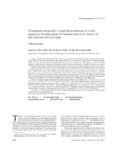 | Bisson, Erica F. | Computed tomography-based determination of a safe trajectory for placement of transarticular facet screws in the subaxial cervical spine: Clinical article | Object. Placement of transarticular facet screws is one option for stabilization of the subaxial cervical spine. Small clinical series and biomechanical data support their role as a substitute for other posterior stabilization techniques; however, the application of transarticular facet screws in th... | 2012-01-01 | |
| 3 |
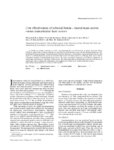 | Bisson, Erica F. | Cost effectiveness of subaxial fusion-lateral mass screws versus transarticular facet screws | As health care reform continues to evolve, demonstrating the cost effectiveness of spinal fusion procedures will be of critical value. Posterior subaxial cervical fusion with lateral mass screw and rod instrumentation is a wellestablished fixation technique. Subaxial transarticular facet fixation is... | 2012-01-01 | |
| 4 |
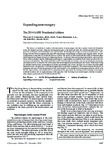 | Couldwell, William T. | Expanding neurosurgery | The history of medicine is replete with innovations in neurosurgery that have spurred further developments across the medical spectrum. Surgeons treating pathologies in the head and spine have broken ground with new approaches, techniques, and technologies since ancient times. Neurosurgeons occupy a... | 2014-01-01 | |
| 5 |
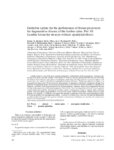 | Dailey, Andrew T. | Guideline update for the performance of fusion procedures for degenerative disease of the lumbar spine. Part 10: Lumbar fusion for stenosis without spondylolisthesis | Lumbar stenosis is one of the more common radiographic manifestations of the aging process, leading to narrowing of the spinal canal and foramen. When stenosis is clinically relevant, patients often describe activity-related low-back or lower-extremity pain, known as neurogenic claudication. For tho... | 2014-01-01 | |
| 6 |
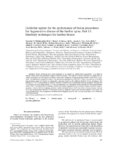 | Dailey, Andrew T. | Guideline update for the performance of fusion procedures for degenerative disease of the lumbar spine. Part 11: Interbody techniques for lumbar fusion | Interbody fusion techniques have been promoted as an adjunct to lumbar fusion procedures in an effort to enhance fusion rates and potentially improve clinical outcome. The medical evidence continues to suggest that interbody techniques are associated with higher fusion rates compared with posterolat... | 2014-01-01 | |
| 7 |
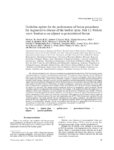 | Dailey, Andrew T. | Guideline update for the performance of fusion procedures for degenerative disease of the lumbar spine. Part 12: Pedicle screw fixation as an adjunct to posterolateral fusion | The utilization of pedicle screw fixation as an adjunct to posterolateral lumbar fusion (PLF) has become routine, but demonstration of a definitive benefit remains problematic. The medical evidence indicates that the addition of pedicle screw fixation to PLF increases fusion rates when assessed with... | 2014-01-01 | |
| 8 |
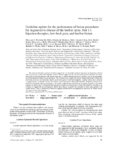 | Dailey, Andrew T. | Guideline update for the performance of fusion procedures for degenerative disease of the lumbar spine. Part 13: Injection therapies, low-back pain, and lumbar fusion | The medical literature continues to fail to support the use of lumbar epidural injections for long-term relief of chronic back pain without radiculopathy. There is limited support for the use of lumbar epidural injections for short-term relief in selected patients with chronic back pain. Lumbar intr... | 2014-01-01 | |
| 9 |
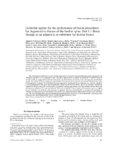 | Dailey, Andrew T. | Guideline update for the performance of fusion procedures for degenerative disease of the lumbar spine. Part 14: Brace therapy as an adjunct to or substitute for lumbar fusion | The utilization of orthotic devices for lumbar degenerative disease has been justified from both a prognostic and therapeutic perspective. As a prognostic tool, bracing is applied prior to surgery to determine if immobilization of the spine leads to symptomatic relief and thus justify the performanc... | 2014-01-01 | |
| 10 |
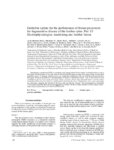 | Dailey, Andrew T. | Guideline update for the performance of fusion procedures for degenerative disease of the lumbar spine. Part 15: Electrophysiological monitoring and lumbar fusion | Intraoperative monitoring (IOM) is commonly used during lumbar fusion surgery for the prevention of nerve root injury. Justification for its use stems from the belief that IOM can prevent nerve root injury during the placement of pedicle screws. A thorough literature review was conducted to determin... | 2014-01-01 | |
| 11 |
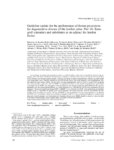 | Dailey, Andrew T. | Guideline update for the performance of fusion procedures for degenerative disease of the lumbar spine. Part 16: Bone graft extenders and substitutes as an adjunct for lumbar fusion | In an attempt to enhance the potential to achieve a solid arthrodesis and avoid the morbidity of harvesting autologous iliac crest bone (AICB) for a lumbar fusion, numerous alternatives have been investigated. The use of these fusion adjuncts has become routine despite a lack of convincing evidence ... | 2014-01-01 | |
| 12 |
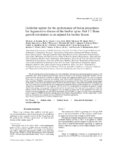 | Dailey, Andrew T. | Guideline update for the performance of fusion procedures for degenerative disease of the lumbar spine. Part 17: Bone growth stimulators as an adjunct for lumbar fusion | The relationship between the formation of a solid arthrodesis and electrical and electromagnetic energy is well established; most of the information on the topic, however, pertains to the healing of long bone fractures. The use of both invasive and noninvasive means to supply this energy and supplem... | 2014-01-01 | |
| 13 |
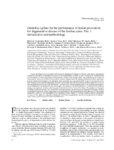 | Dailey, Andrew T. | Guideline update for the performance of fusion procedures for degenerative disease of the lumbar spine. Part 1: Introduction and methodology | Fusion procedures are an accepted and successful management strategy to alleviate pain and/or neurological symptoms associated with degenerative disease of the lumbar spine. In 2005, the first version of the "Guidelines for the performance of fusion procedures for degenerative disease of the lumbar ... | 2014-01-01 | |
| 14 |
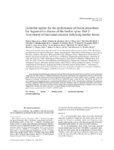 | Dailey, Andrew T. | Guideline update for the performance of fusion procedures for degenerative disease of the lumbar spine. Part 2: Assessment of functional outcome following lumbar fusion | Assessment of functional patient-reported outcome following lumbar spinal fusion continues to be essential for comparing the effectiveness of different treatments for patients presenting with degenerative disease of the lumbar spine. When assessing functional outcome in patients being treated with l... | 2014-01-01 | |
| 15 |
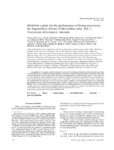 | Dailey, Andrew T. | Guideline update for the performance of fusion procedures for degenerative disease of the lumbar spine. Part 3: Assessment of economic outcome | A comprehensive economic analysis generally involves the calculation of indirect and direct health costs from a societal perspective as opposed to simply reporting costs from a hospital or payer perspective. Hospital charges for a surgical procedure must be converted to cost data when performing a c... | 2014-01-01 | |
| 16 |
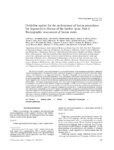 | Dailey, Andrew T. | Guideline update for the performance of fusion procedures for degenerative disease of the lumbar spine. Part 4: Radiographic assessment of fusion status | The ability to identify a successful arthrodesis is an essential element in the management of patients undergoing lumbar fusion procedures. The hypothetical gold standard of intraoperative exploration to identify, under direct observation, a solid arthrodesis is an impractical alternative. Therefore... | 2014-01-01 | |
| 17 |
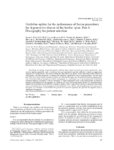 | Dailey, Andrew T. | Guideline update for the performance of fusion procedures for degenerative disease of the lumbar spine. Part 6: Discography for patient selection | Identifying the etiology of pain for patients suffering from chronic low-back pain remains problematic. Noninvasive imaging modalities, used in isolation, have not consistently provided sufficient evidence to support performance of a lumbar fusion. Provocative testing has been used as an adjunct in ... | 2014-01-01 | |
| 18 |
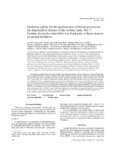 | Dailey, Andrew T. | Guideline update for the performance of fusion procedures for degenerative disease of the lumbar spine. Part 7: Lumbar fusion for intractable low-back pain without stenosis or spondylolisthesis | Establishing an appropriate treatment strategy for patients presenting with low-back pain, in the absence of stenosis or spondylolisthesis, remains a controversial subject. Inherent to this situation is often an inability to adequately identify the source of low-back pain to justify various treatmen... | 2014-01-01 | |
| 19 |
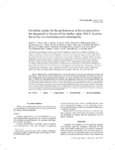 | Dailey, Andrew T. | Guideline update for the performance of fusion procedures for degenerative disease of the lumbar spine. Part 8: Lumbar fusion for disc herniation and radiculopathy | Patients suffering from a lumbar herniated disc will typically present with signs and symptoms consistent with radiculopathy. They may also have low-back pain, however, and the source of this pain is less certain, as it may be from the degenerative process that led to the herniation. The surgical al... | 2014-01-01 | |
| 20 |
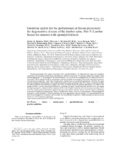 | Dailey, Andrew T. | Guideline update for the performance of fusion procedures for degenerative disease of the lumbar spine. Part 9: Lumbar fusion for stenosis with spondylolisthesis | Patients presenting with stenosis associated with a spondylolisthesis will often describe signs and symptoms consistent with neurogenic claudication, radiculopathy, and/or low-back pain. The primary objective of surgery, when deemed appropriate, is to decompress the neural elements. As a result of t... | 2014-01-01 | |
| 21 |
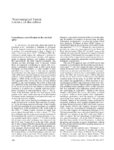 | Dailey, Andrew T. | Lateral mass screw fixation in the cervical spine | To The Editor: We read with interest the article by Kawabata et al.15 (Kawabata S, Watanabe K, Hosogane N, et al: Surgical correction of severe cervical kyphosis in patients with neurofibromatosis Type 1. Report of 3 cases. J Neurosurg Spine 18:274-279, March 2013). Reconstructive spinal surgery has... | 2014-01-01 | |
| 22 |
 | Patel, Bhupendra C. | Lateral orbital wall approach to the cavernous sinus: laboratory investigation | Object. Lesions of the cavernous sinus remain a technical challenge. The most common surgical approaches involve some variation of the standard frontotemporal craniotomy. Here, the authors describe a surgical approach to access the cavernous sinus that involves the removal of the lateral orbital wal... | 2012-01-01 | |
| 23 |
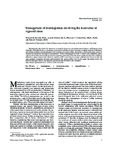 | Couldwell, William T. | Management of meningiomas involving the transverse or sigmoid sinus | Meningiomas that invade the transverse or sigmoid sinuses are uncommon tumors that are challenging to treat surgically. Although the risk of recurrence is associated with the extent of resection, complete removal of meningiomas in these locations must be balanced with avoidance of venous outflow obs... | 2013-01-01 | |
| 24 |
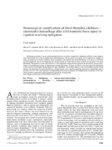 | Garber, Sarah | Neurosurgical complications of direct thrombin inhibitors - catastrophic hemorrhage after mild traumatic brain injury in a patient receiving dabigatran | Dabigatran etexilate is an oral anticoagulant that acts as a direct, competitive thrombin inhibitor. Large randomized clinical trials have shown higher doses of dabigatran (150 mg taken twice daily) to be superior to warfarin in terms of stroke and systemic embolism rates in patients with nonvalvula... | 2012-01-01 | |
| 25 |
 | Couldwell, William T. | Normal dimensions of the posterior pituitary bright spot on magnetic resonance imaging: Clinical article | Object. The normal pituitary bright spot seen on unenhanced T1-weighted MRI is thought to result from the T1-shortening effect of the vasopressin stored in the posterior pituitary. Individual variations in its size may be difficult to differentiate from pathological conditions resulting in either ab... | 2014-01-01 |
